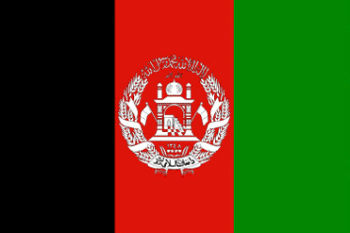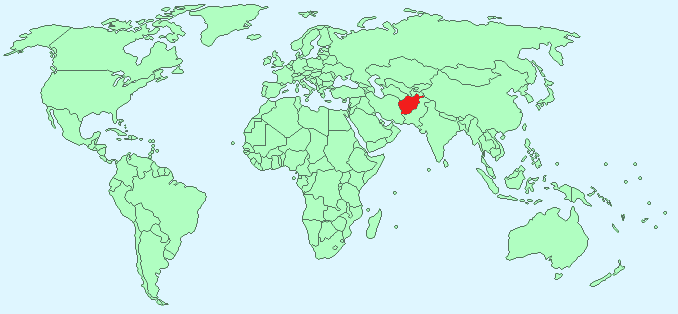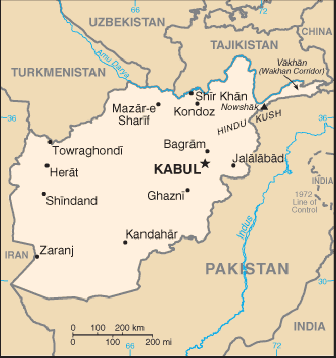Afghanistan


Continent – Asia
Region – Southern Asia
Size – 647,500 km²
Geography – Mountainous (Hindu Kush range), plains in north and south-west
Language – Dari Persian, Pashtu, other Turkic and minor languages
Religion – Muslim – 80% Sunni, 19% Shiite
Monetary Unit – Afghani
Natural Resources – Natural gas, petroleum, coal, copper, gold, silver, chromite, talc, barites, sulphur, lead, zinc, iron ore, salt, precious and semi-precious stones
Agriculture – opium, wheat, fruits, nuts; wool, mutton, sheepskins, lambskins
Industry – small-scale production of textiles, soap, furniture, shoes, fertilizer, cement; handwoven carpets; natural gas, coal, copper

Neighbouring Countries – Turkmenistan, Uzbekistan, Tajikistan, China, Iran, Pakistan
Population – 31,822,848 (2014 estimate)
Population Growth Rate – 2.6%
Average Life Expectancy – 43.8
Capital City – Kabul (population 3,476,000)
Highest Mountain – Noshaq (7,486 m)
Longest River – Helmand (1,150 km)
Climate – Cold winters -24°C to 2°C and hot summers 16°C to 45°C
Yearly Rainfall – 130 cm approx
Plant Life – Mountain Regions – evergreen trees, oak, poplar, wild hazelnut, almond, and pistachio
Plains – camel thorn, locoweed, spiny restharrow, mimosa, wormwood
Animal Life – 100+ mammal species including – gazelle, leopard, snow leopard, markor goat, Bactrian deer, sheep, urial, ibex, bear, wolf, fox, hyena, jackal, mongoose, wild boar, hedgehog, shrew, hare, bat
Bird Life – 380+ bird species including – flamingo, duck, partridge
Harvard Reference for this page:
Heather Y Wheeler. (2015). Afghanistan. Available: https://www.naturalhistoryonthenet.com/Facts_Figures/Country_Facts/afghanistan.htm. Last accessed Thursday, July 21, 2016
Facts and Figures Pages
